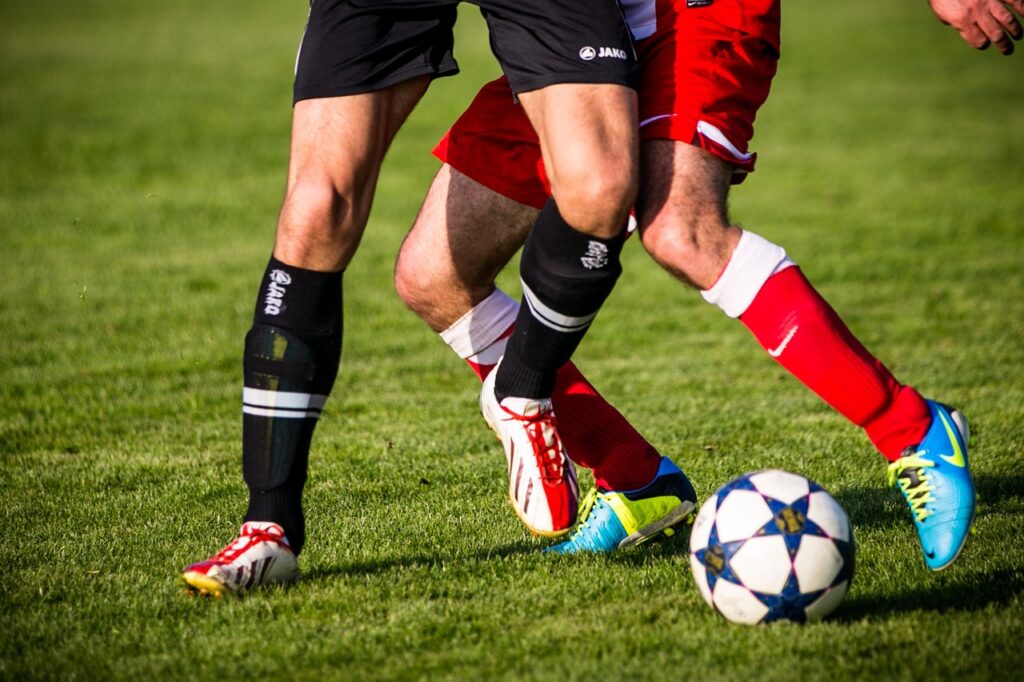Proper gear maintenance boosts peak performance and player safety. A well-maintained kit gives players a competitive edge. Neglecting upkeep leads to poor performance and increased injury risk. Many players overlook gear maintenance, but it’s crucial for extending gear lifespan and preventing costly repairs. To maintain gear effectively, players must understand essential maintenance tips. By doing so, they’ll ensure peak performance on the field.
Regular soccer gear maintenance tips prevent poor performance and injury. It also saves players money by extending gear lifespan. To get the most out of their gear, players must implement effective maintenance tips. By taking care of their gear, players can stay safe and perform at their best.
Key Takeaways
- Regularly clean and dry gear after each game or training session to prevent damage and maintain performance.
- Inspect gear regularly for signs of wear and tear, and replace or repair damaged components promptly.
- Store gear in a cool, dry place away from direct sunlight to prevent degradation and damage.
- Use the right cleaning products and techniques for each type of gear to avoid damaging surfaces and materials.
- Prioritize critical gear components, such as cleats’ studs and ball’s bladder, when repairing or maintaining gear for optimal performance.
Cleaning Soccer Gear Properly
Cleaning soccer gear properly is crucial in maintaining its quality, extending its lifespan, and preventing the buildup of bacteria and odors. To effectively clean soccer gear, it is essential to understand the specific cleaning requirements for each type of gear. For example, shin guards and gloves can be washed with mild soap and warm water, while jerseys and socks can be machine washed using a gentle cycle.
When cleaning soccer balls, use a soft-bristled brush to remove dirt and debris, and then wipe the ball with a damp cloth. Avoid using harsh chemicals or abrasive materials that can damage the gear’s surface. For goalkeeping gloves, use a mixture of equal parts water and white vinegar to remove dirt and odors.
Incorporating these cleaning methods into your soccer gear maintenance routine will help maintain your gear’s quality and extend its lifespan. By following these soccer gear maintenance tips, you can guarantee your gear remains in prime condition, allowing you to perform at your best. Regular cleaning also helps prevent the spread of bacteria and odors, creating a healthier environment for you and your teammates.
Maintaining Soccer Cleats Effectively
Here are some essential soccer gear maintenance tips for maintaining soccer cleats effectively:
- Clean the cleats after each game or training session to remove dirt and debris that may cause damage or affect performance.
- Inspect the cleats regularly for signs of wear and tear, such as loose studs or damaged leather.
- Apply a waterproofing agent to the leather to protect it from water and stains.
- Use a soft brush to remove dirt and debris from the studs and crevices.
- Replace the insoles and laces regularly to maintain comfort and support.
Storing Soccer Gear Correctly
Soccer balls should be stored in a cool, dry place away from direct sunlight, as UV rays can cause the ball to degrade over time. Goalkeeper gloves should be stored separately from other gear to prevent them from becoming misshapen or damaged. When storing gear in a bag or container, make sure to clean and dry each item before storing, and consider using dividers or compartments to keep items organized and easy to find. By following these soccer gear maintenance tips and storing gear correctly, players can help extend the lifespan of their equipment and guarantee they are always ready to perform at their best. Regularly storing gear correctly is an essential soccer gear maintenance tip that every player should know.

Inspecting Soccer Gear Regularly
To conduct an effective inspection, focus on the following critical components:
- Cleats and studs: Check for wear, damage, or loose studs that may compromise traction and stability.
- Ball inflation: Verify the ball’s air pressure meets the recommended standards to guarantee peak performance and prevent injuries.
- Goalkeeper gloves: Inspect for signs of wear, such as cracks or holes, that may affect grip and protection.
- Shin guards: Check for damage, cracks, or worn-out padding that may compromise protection.
- Soccer ball panels: Inspect for cuts, tears, or worn-out seams that may affect the ball’s aerodynamics and movement.
Repairing Soccer Gear Efficiently
A thorough inspection of soccer gear is only the first step in maintaining its peak performance and extending its lifespan. Once issues have been identified, it’s vital to repair soccer gear efficiently to prevent further damage and guarantee player safety. When repairing soccer gear, prioritize the most critical components, such as the ball’s bladder or the cleats’ studs. For balls, use a leather conditioner to restore the outer layer’s suppleness, and replace the bladder if it’s damaged. For cleats, tighten loose studs and replace worn-out ones to maintain traction.
Regularly cleaning soccer gear also plays a significant role in efficient repairs. Remove dirt and debris from gear to prevent damage and make repairs more manageable. Use a soft-bristled brush to clean cleats and a damp cloth for balls. By implementing these repair techniques, soccer players can extend the lifespan of their gear, maintain peak performance, and save money in the long run. Effective soccer gear maintenance tips, such as these, can help players stay focused on the game and perform at their best.
Frequently Asked Questions
How Often Should I Replace My Soccer Gear?
Replacing soccer gear depends on usage and quality. Generally, cleats last 6-12 months, shin guards 2-3 years, and goalkeeper gloves 3-6 months, while balls and training equipment vary based on frequency and intensity of play.
Can I Use Regular Detergent for Cleaning Soccer Gear?
When considering cleaning soccer gear, it’s vital to observe that regular detergent may not be the best choice. Using a mild soap specifically designed for washing athletic gear is recommended to avoid damaging materials and maintain performance.
Are There Any Specific Storage Bags for Soccer Gear?
Specific storage bags for soccer gear are designed to breathe, reducing moisture buildup and preventing bacterial growth. Look for ventilated bags with mesh panels to keep equipment dry and fresh between uses and practices.
How Do I Prevent Mold Growth on Soccer Gear?
Preventing mold growth on soccer gear requires diligent cleaning, drying, and storing. Regularly wash gear, dry thoroughly, and store in well-ventilated areas or breathable storage bags to inhibit moisture accumulation and subsequent mold growth.
Are DIY Soccer Gear Repairs Always Cost-Effective?
While DIY soccer gear repairs can be cost-effective in some cases, they often require specialized skills and materials, potentially leading to further damage or decreased gear performance if not executed correctly.
Conclusion
Effective maintenance of soccer gear is vital for peak performance and safety. Regular cleaning, inspection, and storage contribute to the longevity of equipment. Proper care of cleats, balls, and goalkeeper gloves further guarantees prime functionality. By implementing these essential maintenance strategies, gear degradation is minimized, and performance is maximized. Ultimately, adherence to these guidelines yields improved overall gear condition and enhanced game performance. Proper maintenance techniques are essential for prime gear functionality.
You May Also Like To Read:



